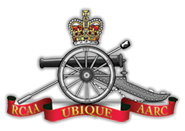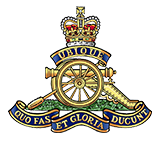The First Gulf War 1990-91
On 9 August 1990, 119Air Defence Battery RCA received orders to deploy a 36-member Javelin Troop to provide extra air defence protection for the three Canadian Naval ships which were part of Canada’s commitment to the UN forces in the Arabian Gulf. The war had erupted in response to the Iraqi invasion of Kuwait. Javelin was procured in a very short span of time for this operation in order to replace the obsolete Blowpipe missile. Detachments were trained in a matter of two weeks while they were in transit to the Gulf. This was accomplished through the provision of an Instructor-in-Gunnery (IG) team from the Royal School of Artillery, Larkhill, UK. The IG team arrived in Halifax just prior to the ships’ departure and conducted weapon training while crossing the Atlantic. A successful live fire practice was held when the ships reached the Azores in early September, and the IG team left the Canadians when the ships reached Gibraltar.
Each ship was provided a section of Javelin, with HMCS Athabaskan and HMCS Protecteur each receiving four detachments while HMCS Terra Nova received three. The troop headquarters was located on HMCS Athabaskan as part of the Canadian Task Group Command staff. The Troop Commander (a lieutenant) also acted as the senior air defence advisor to the Task Group Commander.
The ships arrived in the Central Persian Gulf on 23 September 1990, and commenced UN Patrol duties, including the halting and boarding of ships in day and night as part of the embargo placed on Iraq. The Javelin Troop did not have to fire on any enemy aircraft, as the allies quickly grounded the Iraqi Air Force. They returned to Canada with the ships on 13 March 1991.
Plans were made to deploy 1 RCHA as part of 4 CMBG from Germany to the war, but in the end the Government did not approve the plans, principally over fears of excessive casualties. Three Canadian Gunners did serve in the ground war in exchange postings with allied forces (including one as a Battery Commander with the Royal Artillery), but no Canadian artillery units were deployed with the coalition ground units. No Canadian Gunner casualties resulted from the 1st Gulf War.


